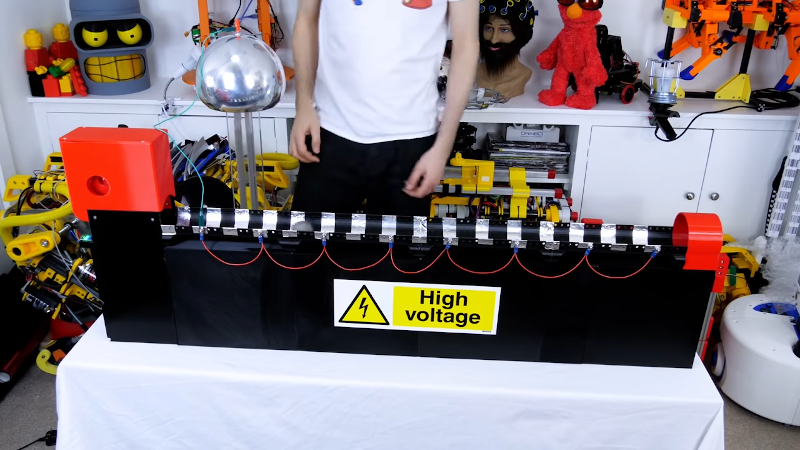We use electricity to move things with the help of motors and magnets all the time. But if you have enough voltage, you can move things with voltage alone. As [James] found out, though, it works best if your objects — ping pong balls, in his case — are conductive.
He wanted to add a Van de Graaff generator to add to his “great ball machine” which already has some cool ways to move ping pong balls. However, to get the electrostatic motion, [James] had to resort to spraying the balls with RF shielding spray.
We liked that he did some experiments to see how the balls would work before spending a lot of time 3D printing the final project. We did wonder, though, if there were cheaper options to make the balls conductive such as graphite or conductive ink.
The end result is a 3D printed low-energy ping pong rail gun, more or less. The design is pretty clever and you might find some ideas even if you don’t want to actually accelerate ping pong balls. An Arduino, of course, controls the whole affair. If you do want to replicate it, you can find the CAD files and the software on GitHub.
We’ve always had a soft spot for Van de Graaff generators, even tiny ones. If you understand how they work, they aren’t very difficult to build.
















Why does this video remind me of Hitch hiker’s guide to the galaxy?
Useless, complicated, low efficiency, 3D printing large commonly available cheap parts (the common PVC gutter)
Nothing makes sense here, but I can’t stop watching. I’m confused.
Don’t print-shame; believe in the process.
“Your invention is useless, complicated, low efficiency, 3D printing large commonly available cheap parts…”
Oh goodie! Success!
People are using this technology to move people right now and commit heinious crimes so I want to find out how to stop it on myself
quick question…..if you switch the phase on the high voltage can you make the ball go back and forth across the tube?
Thanks
If you could sense where the ball is and do it at the right times, then yes. Otherwise, probably not.
It will go back and forth if you replace one of the electrodes with a conducting plate that physically stops it and changes the charge on the ball. No need to detect anything, it will just happen that way.
The glass dish with foil tape: are those crosses of tape really conducting through the adhesive, or is that just two lengths of tape with a charge?